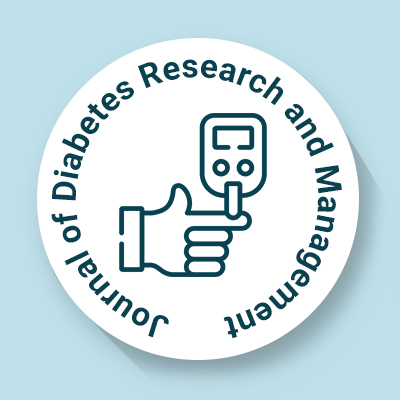
Journal of Diabetes Research and Management
OPEN ACCESS

OPEN ACCESS
Insulin is the primary anabolic hormone in the body which is a peptide hormone produced by the beta cells in the pancreatic islets. Insulin regulates the metabolic rate of carbohydrates, proteins, and fats in the body, particularly in skeletal muscles, the liver, and fat tissue. It acts as a chemical messenger, enabling cells in skeletal muscles and the liver to absorb glucose and sugar from the bloodstream. The pancreas produces insulin, and as glucose levels rise, more insulin is secreted to maintain balanced blood sugar levels. Additionally, insulin plays a role in breaking down fats and proteins to generate energy. A proper balance of insulin is essential for managing blood sugar and supporting various vital functions in the body.
Beta cells are responsive to blood sugar so that they release insulin into the bloodstream in the case of a high level of glucose, and suppress the secretion of insulin when glucose levels are low. Glucose also controls insulin production: high glucose stimulates insulin production and low levels of glucose result in lesser production. Insulin increases the uptake and metabolism of glucose by the cells, thus lowering blood sugar. Their nearby alpha cells, responding to the cues of the beta cells, release glucagon into the bloodstream in the reverse pattern: more when blood glucose is low, and less when glucose levels are high. Glucagon raises blood glucose through the stimulation of glycogenolysis and gluconeogenesis in the liver. Insulin and glucagon release into the blood based on the blood glucose level is the major mechanism of glucose homeostasis.
Human insulin is made up of 51 amino acids and has a molecular mass of 5808 Da. It consists of two linked chains, known as the A-chain and the B-chain. The structure of insulin shows only minor variations among different animal species. Insulin sourced from non-human animals can differ slightly in its effectiveness for carbohydrate metabolism compared to human insulin. Porcine insulin is nearly close to human insulin and was broadly used to treat type 1 diabetes until the availability of human insulin increased significantly due to recombinant DNA technologies.
Insulin may have evolved over a billion years ago, with its molecular lineage tracing back to some of the earliest unicellular eukaryotes. Beyond the animal kingdom, insulin-like proteins have also been discovered in fungi and protists.
In most vertebrates, insulin is secreted by the beta cells of the pancreatic islets, while in certain teleost fish, it is produced in the Brockmann body. Interestingly, cone snails such as Conus geographus and Conus tulipa, which are lethal sea snails that hunt small fish, alter insulin forms in their venom. This insulin toxin, which is more structurally similar to that of fish than to the native insulin of the snails, incapacitates their prey by lowering their blood glucose levels.